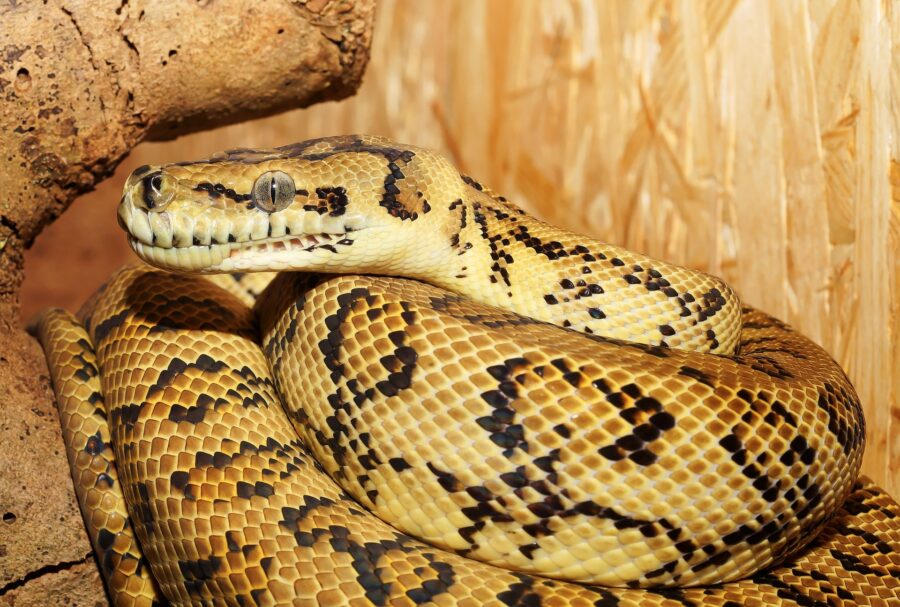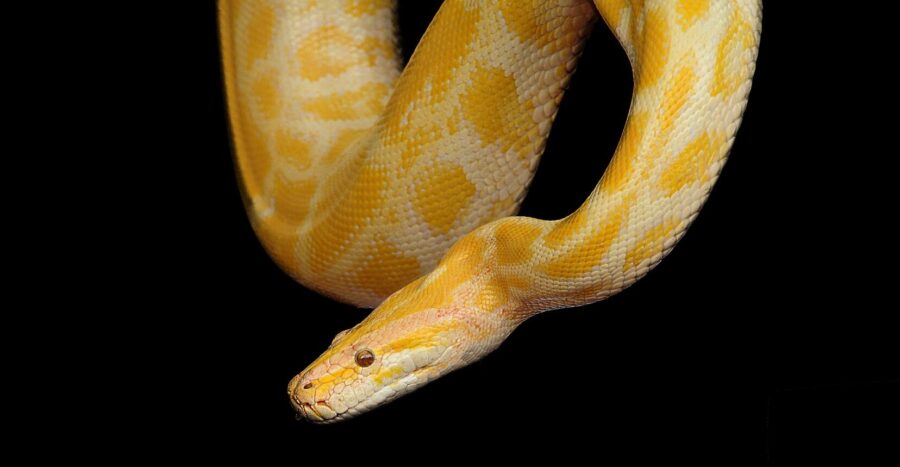See A Massive Python Snake Crossing The Road In Florida
Burmese pythons are an invasive species in Florida, with wild snakes growing to a massive size, as can be seen in this terrifying video.

Why did the giant python cross the road? That was the question one Florida motorist asked when an enormous snake brought vehicles to a stop in the Everglades National Park. USA Today reposted the footage shared in a lighthearted Facebook post by Florida meteorologist Matt Devitt, but these invasive snakes are no joke.
The silent video shows an enormous Burmese python on a rare daytime trip into the wide open. After a moment to pose for the camera, the snake slithers back into the refuge of the Everglades wetlands.
Burmese pythons were illegally introduced into Florida’s ecosystem in the 1970s. Now, they are a fact of life. The snake, which originated in southeast Asia, has proliferated in the Everglades and now threatens the area’s ecosystem.
Pythons in the region, including the one on the road, can grow well over 15 feet in length and can weigh over 200 pounds. They feast on the area’s wildlife, often consuming deer, big cats, and even alligators. More concerning, the snakes have been known to eat threatened and endangered species protected in the Everglades National Park.
The python problem in Florida has even prompted the state to allow the public to legally hunt the invasive snake species for periods of time. Comments on Devitt’s python video showed the widespread disdain for the snakes and their impact on the environment. Some expressed concern, while some simply wanted to run the snake over.
Biologists working the problem have a slightly craftier approach to finding and catching the invasive predators. Scientists attach orange tags to male pythons in order to track them for scientific research. When they suspect a large female snake (which often carries dozens of eggs) in a certain area, they release tagged males; a male snake, ever on the prowl for a mate, can be followed to a large female so she can be captured and exterminated.

While Florida has adopted methods for slowing the spread of pythons, the snake species has proved challenging to control. The snakes naturally thrive in the hot, wet climate of the Everglades, and the large tracts of protected land at the park make for a perfect hiding place. The Burmese python is not alone in its attack on Florida, as the state is the most affected in the country by invasive species.
The state’s climate allows a host of non-native reptiles, amphibians, and plants to thrive. Escaped pets and mismanaged plants from homes or trade ports can have dire consequences for the ecosystem and the economy. Florida estimates that over $100 million dollars is spent managing invasive plants alone.
Exotic fish, lizards, frogs, certain snake species, and even non-native wild hogs wreak havoc on native animals and their habitat. Managing the invasive species crisis is complicated further by extreme weather like hurricanes, and as climate change affects the frequency and severity of storms across the country, the problem doesn’t look to be getting any easier to solve.
Florida has a snake problem, but the most popular comment on the Florida weatherman’s Facebook post read: “The worst snake I’ve ever dealt with was human.” As Florida looks to resolve the threat of an invasive snake species, humanity at large must reckon with its actions and the impact they have on the natural world.












